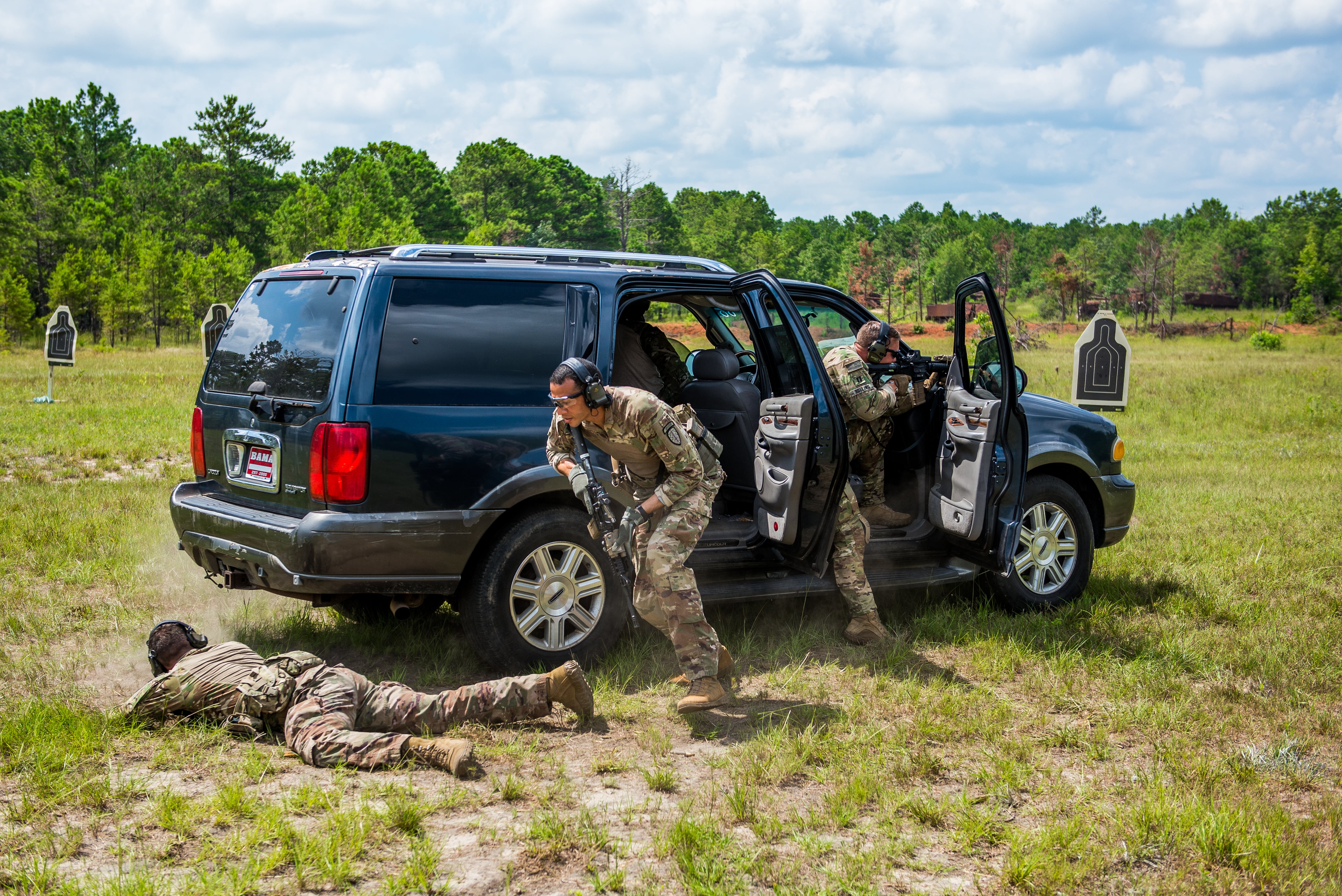WASHINGTON — The shift to large scale, peer combat is happening at the Maneuver Center of Excellence, at Fort Benning, Georgia — the Army’s nexus for ground combat force development and entry-level to mid-career infantry and armor courses.
“We’ve changed all of our training scenarios from the Middle East to Europe or the Pacific Rim to focus on the threats and adversaries,” said Maj. Gen. Patrick J. Donahoe, who heads the MCOE.
Donahoe spoke with Army Times ahead of the Association of the U.S. Army’s annual meeting. He gave an overview of the work done over the past year at MCOE and how it affects the ground combat element and the rest of the Army.
In the captains career course, they’ve moved away from cordon and search scenarios. And they’ve added into each classroom access to command post computing environments, as well as updated battle command systems.
“Now that the students can access that inside our classrooms, we’re off map sheets and off plexiglass and now planning and operating on Army battle command systems before they go to the force,” Donahoe said.
On top of training, MCOE also develops new units and puts concepts to the test to see if they work.
“Currently, the heavy divisional cavalry squadron, its force design, is going through a number of turns at the Maneuver Battle Lab,” Donahoe said. “We’re developing the light brigade and motorized brigade, taking a series of turns with those on European and Asian terrain.”
An armored assault company is also being designed. If approved by Army leadership, it would include two Bradley Fighting Vehicle platoons led by an armor lieutenant and all of those crewman would have the 19C MOS – a purpose built Bradley crewman.
Inside that assault company there are also two infantry platoons led by an infantry lieutenant and sergeant. The students leaving Fort Benning will be Bradley drivers from day one.
The MCOE has also become the centerpiece of where soldiers are working with tactical robots, from ground robotic wingmen to pocket-sized drones.
They’ve done work with those organizations on how to employ robotics systems in an infantry platoon or combined arms company.
“You never know how things are going to be employed by soldiers in a sterile laboratory,” Donahoe said. “You have to do it in the dirt outside the lab, inside the squad and platoon.”
RELATED

But the fundamental mission of the MCOE hasn’t changed: Provide well-trained close combat forces.
“I believe in the infantry-tank team,” Donahoe added. “At the end of the whip of American power will be the tank-infantry team in the close fight delivering an infantry squad to the objective.”
The biggest change at Fort Benning over the past year has been the restructuring of the school and the re-establishment of the leader brigade the 199th Infantry Brigade, according to Donahoe.
“I would argue that brigade is probably the most important brigade in the Army,” he said. “It is absolutely the most important brigade in U.S. Army Training and Doctrine Command.”
“On any given day we’ve got 2,000 lieutenants training on the installation,” he added.
Armor training units work in tandem and sometimes within those infantry soldiers.
“There’s an incredibly rich cross-pollination of how we’re training infantry and armor,” he said. “An infantry lieutenant will come here and if we don’t pay attention to it they will leave Fort Benning without ever having touched, seen, smelled and felt an M1 Tank.”
Every infantry lieutenant should get in the turret of an M1 Tank, see the tank fire and get an understanding of what the tank brings to the battlefield, according to Donahoe.
“So that the first time they wrestle and grapple with that intellectually is not on some battlefield,” Donahoe said. “It’s the same thing for an armor lieutenant. The first time they see an infantry squad in the wild should be here at Fort Benning and they see the infantry squad as fundamental to the last 100 yards of combat.”
Correction: The article has been corrected to reflect the correct name of the MCOE commander.
Todd South has written about crime, courts, government and the military for multiple publications since 2004 and was named a 2014 Pulitzer finalist for a co-written project on witness intimidation. Todd is a Marine veteran of the Iraq War.





